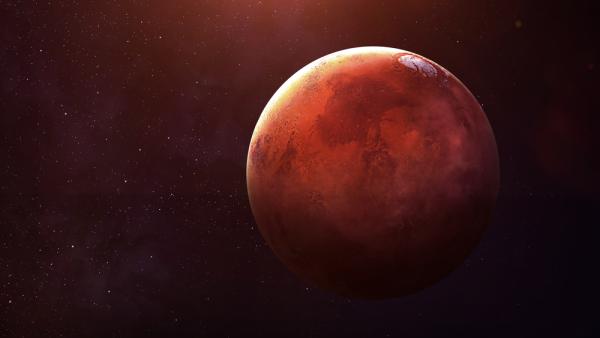Since there was a time when Mars' atmosphere could have supported life, it's an ongoing shame we keep learning that regarding some far-flung, future colonization, we're a little late to the party.
How late? Oh, just few billion years.
And now, NASA has just revealed that it'll be even harder for humans to ever set up shop on the Red Planet, because it's becoming ever-more dead.
New information shows that roughly two thirds of Mars' atmosphere has been eliminated, literally forced out to space by solar wind and radiation.
Calculations just published by the space agency show that 65 percent of "Mars' atmospheric gas has been lost to space, contributing to the transition in climate from an early, warm, wet environment to today's cold, dry atmosphere."
From data collected above the planet by MAVEN, the Mars Atmosphere and Volatile Evolution Mission spacecraft, scientists determined that of all the argon, a gaseous element, that ever existed in its atmosphere has now been physically driven away from Mars. Other data and evidence was collected on the planet's surface by the rover, Curiosity.
Argon measurements were made by gauging the presence of two isotopes of the element – which have different weights – on the Mars' surface and in its upper atmosphere. Comparing their presence in both places allowed researchers to arrive at their conclusion.
NASA's research team, led by principal investigator Bruce Jakosky at the University of Colorado in Boulder, used argon as the primary indicator because it's a "noble gas" that cannot react chemically, and can only disappear from the atmosphere by being physically displaced, a process called "sputtering."

Once the argon calculations were made, scientists were able to "determine the sputtering loss of other atoms and molecules, including carbon dioxide (CO2)," which is key since it's a "major constituent of Mars' atmosphere and because it's an efficient greenhouse gas that can retain heat and warm the planet," according to a statement released by NASA. (The above infographic is courtesy of NASA's Goddard Flight Center.)
"We determined that the majority of the planet's CO2 was also lost to space by sputtering," said Jakosky. CO2 is knocked out of the atmosphere by solar wind, which NASA describes as "a thin stream of electrically conducting gas constantly blowing out from the surface of the sun."
Jakosky added that this argon measurement is essential because, "There are other processes that can remove CO2, so this gives the minimum amount of CO2 that's been lost to space."
The paper was published March 31 in the journal Science.
Physical evidence on Mars has led scientists today to believe that water, which is essential to life, existed in its ancient past.




